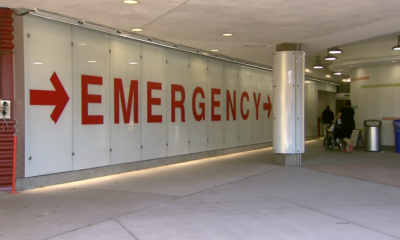Local News
New cell towers along B.C.’s Highway of Tears now active

Five new cellular towers along B.C.’s Highway 16, otherwise known as the Highway of Tears, were made active on Monday.
With nine of the final 11 towers now active, the cellular gap between Prince George and Prince Rupert is closing, Rogers Communications chief technology officer Mark Kennedy shared.
“With nine towers in service, we are proud to provide 166 kilometres of 5G cellular coverage on Highway 16,” Kennedy stated. “We are honoured to work with Indigenous communities and government partners on this generational project to increase safety and improve connectivity in the region for residents and travellers.”
When the project is completed, 252 kilometres of new cell service will make sure that there’s continuous coverage along the entire highway corridor which spans 720 km.
New cellular service tower along Highway 16 in B.C. (Supplied)
According to Rogers, the project fulfills one of the recommendations from the 2006 Highway of Tears Symposium report which looked into increasing safety for Indigenous women and girls in the region. Dozens of women have disappeared or been killed along the highway between Prince Rupert and Prince George since the 1970s.
“In 2006, the Highway of Tears Governing Body dreamed of having a communication network between Prince Rupert and Prince George, our vision was simply to build telephone booths along the corridor. We never envisioned that 18 years later, we would be celebrating the substantial completion of the project to provide cell coverage along Highway 16,” said Mary Teegee, a Missing and Murdered Indigenous Women and Girls (MMIWG) activist.
“These are more than just cell towers, they are lifelines for the north,” Teegee added.
Rogers explains that the new towers are part of its rural wireless service expansion project with the provincial government’s Connecting British Columbia program.
Rogers Communications is the parent company of Citytv and this website.












